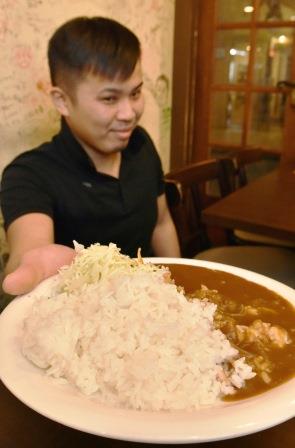Many restaurants now increasingly select the best rice respectively for dishes such as curry rice and risotto, as Sushi bars use special types of rice suitable for Sushi.
“Production of rice with characteristic features has enabled us to increase our sales,” said a representative of a risotto rice supplier, an agricultural corporation called Farming Staff in Kashiwazaki-shi, Niigata Prefecture. The corporation is making an ambitious plan to expand the rice cultivation.
“Hiroo no Curry,” a popular curry food restaurant in Shibuya-ku, Tokyo, serves their guests with a primary ingredient of “Karei-mai” rice produced in Myoko-shi and its neighboring towns, Niigata Prefecture. “Karei-mai” means “elegant dancing,” while its pronunciation inclines consumers to recall “Curry-mai (rice).” The owner of “Hiroo no Curry” appreciates its quality and says, “Cooked Karei-mai tastes good by itself. The rice with curry roux is also excellent.”
At an Italian restaurant, ARCI-GOLA, in Kashiwazaki-shi, Niigata Prefecture, a special variety of rice named “Nagomi-risotto” is used. Two years ago, the restaurant replaced rice imported from Italy with “Nagomi-risotto” produced by local farmers. “Cooked Nagomi-risotto rice moderately maintains a slight chew because of its firm grain. This texture really suits the palate of our Japanese guests,” ARCI-GOLA’s chef says.
At Saga prefecture in Kyushu, a southern island of Japan, long-grain rice for a Spanish cuisine, paella, is also produced by member farmers of some primary agricultural cooperatives (JAs).
(Jan. 26, 2016)


